Jered Weaver
When an already-good pitcher gets better, it’s time to ask why. As is often the case, we can start with a few bits of news from the colder months of the year.
Jered Weaver spent significant time on his two-seam fastball during 2010 Spring Training. It started with a version Joel Pineiro taught him in February, but he ended up going back to the grip he had been using over the past two seasons. Actually, you can find reference to Weaver’s two-seamer back to at least 2006 in Google News, but he started using it regularly in September 2008.
Jered Weaver pitch selections
Left pane: selections by season; right pane: upper region is LHH and RHH for 2007-2008, lower region is is 2009-2010
Unlike his older brother Jeff Weaver, the younger Weaver comes right over the top*. This gives his fastball an almost cutting motion, in addition to good “rise.” That’s not always the best thing against left-handed batters, so Jered’s two-seamer gives him a fastball that will run away from the lefties. Run being the operative word, as that over-hand delivery turns sink into run with a two-seamer.
*Usually. Jared also will drop down some times, but he seems to be doing it less
That deserved more than an asterisk.
Jered Weaver release points by season, home games
shown from catcher’s view
You can find the key for those pitch colors in the following graphs, which will introduce you to Weaver’s full arsenal. But you can see a lack of low-angle pitches in 2010.
Jered Weaver pitch graphs
Top left: spin deflection relative to ball under the influence of gravity alone, catcher’s view; top right: pitch speed by spin orientation; bottom: flight paths from bird’s-eye view, first-base view and catcher’s view (inset)
You could argue the slider and the curveball are the same pitch thrown different speeds.
Pitch metrics
Boiling it down toward the bottom line, Weaver has been a quality pitcher over his career but is having a breakthrough season—so far.
What’s your favorite pitching stat? I use a few, ranging from my own rv100a and rv100e (linear weights turned into an ERA-like number, “a” uses play-by-play outcomes, “e” uses league-average outcomes by batted ball type, both are based on the ball/strike count and run expectancy changes) to the found-at-fangraphs FIP, xFIP and tERA.
| year | rv100a | rv100e | ERA | FIP | xFIP | tERA |
| 2007 | 3.52 | 3.97 | 3.91 | 4.06 | 4.76 | 3.76 |
| 2008 | 3.81 | 4.02 | 4.33 | 3.90 | 4.28 | 4.14 |
| 2009 | 3.69 | 3.71 | 3.75 | 4.04 | 4.48 | 3.97 |
| 2010 | 2.67 | 2.41 | 3.04 | 2.97 | 3.28 | 2.73 |
No matter how you slice it, this has been a good year for Weaver. Given his increased reliance on a two-seam fastball, let’s look at a few things pitch-by-pitch. rv100e and rv100a are shown below, along with whiff rate (misses per swing), ball to called-strike ratio, groundball rate and pop-up rate.
For each pitch (and overall), we’ve included updated benchmarks for comparison (MLB2010) along with Weaver’s three-year totals (JW07-10).
Overall
| year | Whiff | B:CS | GB% | PU% | rv100a | rv100e |
| 2007 | 0.183 | 1.8 | 37% | 9.2% | 3.52 | 3.97 |
| 2008 | 0.223 | 2.0 | 33% | 11.5% | 3.81 | 4.02 |
| 2009 | 0.226 | 1.9 | 30% | 15.4% | 3.69 | 3.71 |
| 2010 | 0.262 | 1.9 | 38% | 12.4% | 2.67 | 2.41 |
| JW07-10 | 0.222 | 1.9 | 34% | 12.4% | 3.52 | 3.65 |
| MLB2010 | 0.208 | 2.1 | 44% | 7.7% | 4.01 | 4.28 |
Weaver was, by these numbers, in the top 30 or 40 of MLB starters in 2008 and 2009. With limited PITCHf/x data available for 2007, I can only say “about the same.” For 2010, he’s beating the world. It’s important to note, the best full-season rv100e I have is owned by John Smoltz**, from 2007. Tim Lincecum (2009) and CC Sabathia (2008) have the only other sub-3.00 seasons. Weaver’s rv100a, which is trick-able by good luck on balls in play, would be ranked 19th for seasons of 1500 or more pitches (in PITCHf/x), tied with Josh Johnson’s 2009 campaign. Four pitchers have gone below 2.00 (Chris Carpenter, Lincecum, Justin Duchscherer and Chris Young**).
**2007 does not have complete PITCHf/x data
In case you’re wondering, Weaver leads the majors in rv100e this season (minimum 1000 pitches). He’s trailed by Cliff Lee, Adam Wainwright, Mat Latos and Ryan Dempster (all < 3.00). In rv100a Weaver ranks 20th, with Mr. Lee leading Matt Cain, Johnson, Wainwright and Latos with sub-2.00 numbers.
Two-seam fastball
| 2-seam FB | Whiff | B:CS | GB% | PU% | rv100a | rv100e |
| 2007 | 0.313 | 2.5 | 50% | 0.0% | 0.58 | 0.85 |
| 2008 | 0.211 | 4.4 | 46% | 0.0% | 3.92 | 6.55 |
| 2009 | 0.109 | 1.7 | 22% | 23.3% | 5.34 | 3.70 |
| 2010 | 0.145 | 1.7 | 33% | 15.0% | 4.43 | 1.95 |
| JW07-10 | 0.136 | 1.9 | 28% | 18.7% | 4.79 | 3.29 |
| MLB2010 | 0.122 | 1.8 | 52% | 4.6% | 4.31 | 4.64 |
I typically refer to two-seam fastballs as sinkers. That is not the case here. You can just about disregard 2007 and 2008, when Weaver threw just 30 and 98 two-seamers, respectively. If you look back at the release point charts, you may wonder how many were just four-seamers launched from a lower arm slot. Whatever the case, getting a moving fastball is beneficial for Weaver’s long-term success. His fastball really doesn’t cut so much as it just goes straight. He’s not Mariano Rivera, Jenrry Mejia or even Joakim Soria. While straight, Weaver’s height and release point produce a downward plane which often works in favor of a change-up. And, apparently, a two-seam fastball prone to pop-ups.
So far, Weaver’s two-seamer has been more effective, but I’d say the jury is out on a grade. It’s probably not good to compare it to other two-seam fastballs, unless you cherry-pick them from the Latoses of the world.
Change-up
| Change | Whiff | B:CS | GB% | PU% | rv100a | rv100e |
| 2007 | 0.311 | 2.4 | 48% | 8.5% | 2.51 | 2.92 |
| 2008 | 0.373 | 2.3 | 45% | 9.1% | 0.80 | 1.12 |
| 2009 | 0.328 | 3.3 | 46% | 8.1% | 1.47 | 2.20 |
| 2010 | 0.346 | 2.3 | 47% | 14.9% | 0.14 | 1.19 |
| JW07-10 | 0.342 | 2.6 | 46% | 9.4% | 1.30 | 1.88 |
| MLB2010 | 0.297 | 3.6 | 49% | 7.0% | 3.66 | 4.25 |
OK, so maybe that downward plane deception is working here. Weaver has a tremendously effective change-up. What more could I add to these results?
Four-seam fastball
| 4-seam FB | Whiff | B:CS | GB% | PU% | rv100a | rv100e |
| 2007 | 0.133 | 1.7 | 32% | 9.6% | 4.36 | 3.97 |
| 2008 | 0.175 | 2.0 | 26% | 14.8% | 4.83 | 4.40 |
| 2009 | 0.179 | 1.8 | 21% | 18.9% | 4.42 | 4.18 |
| 2010 | 0.223 | 2.2 | 32% | 10.1% | 2.24 | 2.75 |
| JW07-10 | 0.172 | 1.9 | 27% | 14.1% | 4.28 | 4.03 |
| MLB2010 | 0.163 | 1.7 | 35% | 10.0% | 4.25 | 4.41 |
A fairly average pitch is now a plus-plus pitch. Jered doesn’t throw a ton of strikes with his fastball, but no one seems to be hitting it.
Curveball
| Curve | Whiff | B:CS | GB% | PU% | rv100a | rv100e |
| 2007 | 0.191 | 1.1 | 32% | 0.0% | 3.81 | 4.67 |
| 2008 | 0.209 | 0.9 | 38% | 15.6% | 1.75 | 2.84 |
| 2009 | 0.303 | 1.0 | 38% | 6.4% | 3.66 | 3.85 |
| 2010 | 0.273 | 1.1 | 45% | 13.2% | 1.06 | 2.72 |
| JW07-10 | 0.255 | 1.0 | 39% | 9.4% | 2.65 | 3.53 |
| MLB2010 | 0.272 | 2.2 | 49% | 5.8% | 4.18 | 4.37 |
Looks like an even-year pitch, doesn’t it? Up year or down year, it’s a plus pitch. Note the upward trend in ground ball rate. Here’s another upward trend … slider whiffs.
Slider
| Slider | Whiff | B:CS | GB% | PU% | rv100a | rv100e |
| 2007 | 0.151 | 2.1 | 41% | 12.8% | 4.18 | 5.26 |
| 2008 | 0.205 | 2.1 | 31% | 5.6% | 3.06 | 5.56 |
| 2009 | 0.302 | 2.9 | 38% | 11.1% | 2.24 | 3.87 |
| 2010 | 0.435 | 2.2 | 36% | 9.1% | 3.70 | 2.94 |
| JW07-10 | 0.261 | 2.3 | 37% | 9.8% | 3.15 | 4.52 |
| MLB2010 | 0.324 | 2.4 | 44% | 8.7% | 3.32 | 3.39 |
Hello, Brad Lidge territory. Also extend a greeting to declining groundball rates. Put it together, you have an average pitch.
Summing up
Weaver looks to be at his best in 2010, clicking with all of his pitches. Everything is at least average—which is better than average to begin with, he’s a starter, not a reliever, and he’s in the American League. He probably can’t keep it up, but I wouldn’t expect him to regress too far. First, there’s no sign of extreme luck in batted balls, judging by the small gap between rv100a and rv100e. Second, young pitchers can improve. Weaver seems to have developed a good two-seamer to complement his already effective fastball/change-up/curveball combination. His slider is nothing to scoff at, so we’re talking about someone with five quality pitches. Guys like that win Cy Youngs.
References & Resources
PITCHf/x data from MLBAM and Sportvision. Batted ball data from MLBAM. Pitch classifications, linear weights (rvERA) and other pitch metrics by the author. All other statistics from Fangraphs.
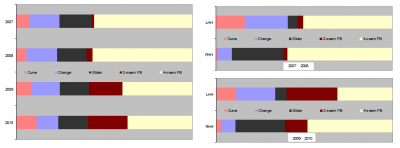
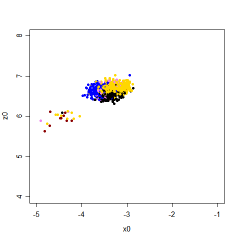
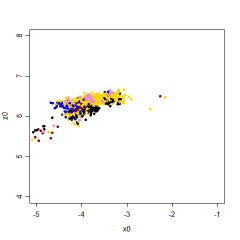
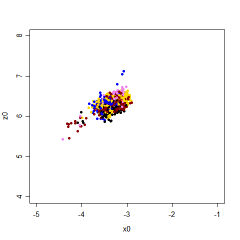
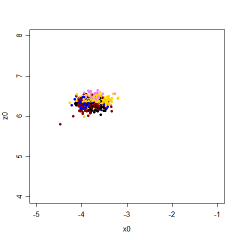

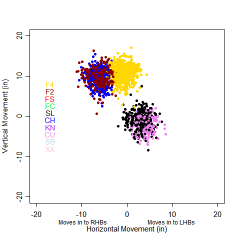
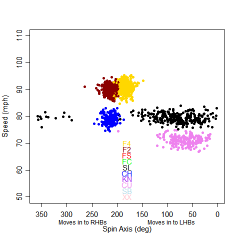
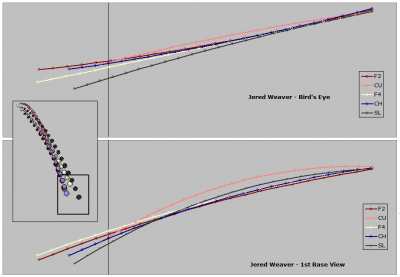
I find it interesting that Weaver uses so many more two-seamers to lefties than to righties. When I’ve seen him pitch (and that’s an insignificant sample), I remember him using it as a watched-strikeout pitch, starting it at the batter’s hip and bringing it back over the inside corner.
I have to admit, the front-door two-seamer is one of my favorite pitches. Strasburg’s can be utterly devastating. It certainly gives Weaver a nice weapon.
This level of research truly amazes me. The time, knowledge, and dedication involved are truly impressive. I’ll tell you this much about Jered Weaver. The way he throws across his body and flings himself off the mound toward first base, he will always be a prime candidate for a shoulder blowout, and will never win a gold glove because he is in position to field a ball after he delivers the pitch.
Harry, I agree completely. As for Strasburg, might he actually use that technique with two different fastballs? From what I’ve seen, both from TV and the pitch data, he’ll use his four-seamer as an effective spill-over pitch because it tails so much. The two seamer (one-seamer?) seems to have only slightly more lateral action than the four-seamer, but it sinks a lot more.
Peavy’s front door two-seamer in his prime was one of the best I’ve ever seen. It seems as though he’s lost some movement over the years and it isn’t as good as it was before.
Jim, that’s just not the case. There are lots of major league starting pitchers who rarely, if ever, throw a two-seamer.
To name a few … Yovani Gallardo (thriving), Franklin Morales (meh), Tommy Hanson (thriving), Matt Cain (thriving) … I could go on but I won’t since I obviously didn’t play enough baseball to know this.
Rich, it’s funny I was going to email you about Weaver to see what you had on him. Thanks!
I bow to you Harry, but tell me this. What was your percentage of 4-seamers to 2-seamers when you pitched, and which ones tended to be hit the furthest?
All four seamers, and they all got hit far.
And, Jim, if it isn’t clear, I’m just busting your chops a bit
I have such a strong bias towards sinker/cutter pitchers I often have to remind myself of the Matt Cains of the world who get guys out without it.
I understand Harry, and I appreciate that guys like Cain get by mostly on 4-seamers, but they have to have some pitch, whether it’s a two-seamer, a sinker, or an overhand curve, that works down in the zone. No one, not even Koufax, could thrive consistently staying up in the zone.
Actually, you can find reference to Weaver’s two-seamer back to at least 2006 in Google News, but he started using it regularly in September 2008.
…or 2004.
“I throw both a two-seam and a four-seam fastball.”
http://baseballanalysts.com/archives/2004/06/and_down_the_st_1.php
***
…or 2005.
“He may also benefit in due time by getting more sink on his two-seam fastball, which he uses to complement his more powerful four-seamer.”
http://baseballanalysts.com/archives/2005/06/all_things_come.php
Harry: I should have also commended you for your fine article. Good job.
Jim, very good point, and, talking about Strasburg …. I really can’t think of a guy who could command a four-seam fastball down in the zone like Strasburg does. It’s dangerous, if you miss up you’re going thigh/belt high, and it’s very easy/natural to miss up with a four-seamer.
Anyone got some ideas? Could make for interesting research….
I don’t know how much you all have played the game, but every pitcher from high school up throws a two and four seam fastball. No one, not even a Strasburg, can survive or thrive with just one.